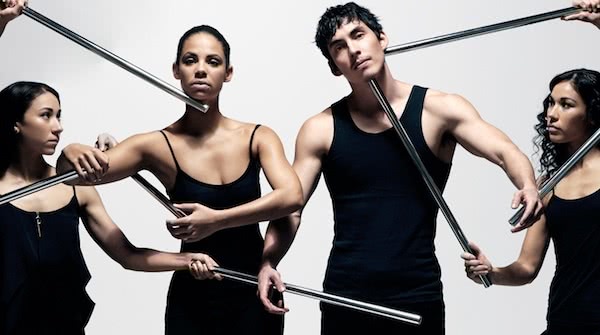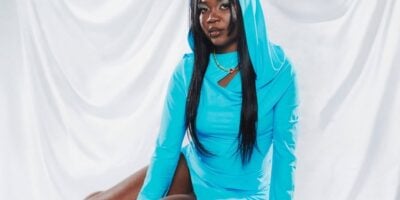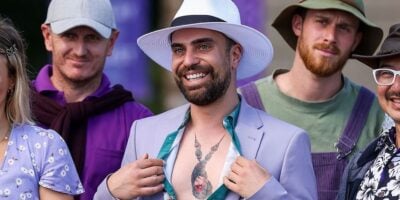Shaun Parker’s newest dance work,Am I,takes on the biggest idea of all – the origin of human culture. After five years of research and development, the piece will make its premiere at next year’s Sydney Festival, and it’s an ambitious work to say the least. “The original idea behind the work was that people have this darkness inside them,” he explains. “I wanted to do a piece exploring this instinct we have, deep down, to shun and to fight people who are different from ourselves. My initial focus was on racism in modern day Australia, but the more I read, the more I started to strip that away as I realised that no matter where you are in history, these deeper human instincts are present. I wanted to go deep, so I went from exploring Australia’s cultural identity to exploring genetic identity. I went back and back, before culture was created, because culture was created by man, not the other way around.”
Parker’s work takes on the notion that culture was created by man and looks at the ways that cultures form. “We created culture through our different tribes,” he says. “Our spirituality, our need for music, our need for love, our need for deities and political systems – all these things shape our cultures, and I wanted to go back to the cradle of civilisation, where these things were formed. Am I is about a group of humans starting anew, with slates wiped completely clean. “The piece looks at the formation of societies and political structures, of war, of love,” Parker says. “Not only have humans evolved into complex political systems, there’s been a really strong evolution of emotions.”
This evolution of emotions, Parker says, has been key to human survival, and it plays a big part in Am I. “Emotion is one of the keys to our survival,” he says. “The fact that that a human mother and father look after their baby much longer than any other animal is very important. That evolution of love ensures that the parents will hopefully stay around and protect the child. The work addresses both those things – at the same time as the tribes are fighting with each other, they’re making love. The killing and the lovemaking are juxtaposed. It sounds really heavy, but it opens the work up as a voyeuristic look at how we are as humans.”
The big question is how do you tackle such huge themes through the medium of dance? “The dancers I have are phenomenal,” Parker says, “and they can embody incredible conceptual ideas with ease. I have seven of the best in Australia. I can work with them on concepts, and they can get there through the body, they can extrapolate these ideas with their bodies more so than with words. Words are finite, they hang in the air and they mean something, but with the body, you can communicate things in a deeper way.” One of the performers in the piece, Julian Wong, auditioned as a cello and Chinese flute player, but when Parker found out he was also a martial artist, he became a key dancer in the work. “Julian trains every year with monks in China, and he’s created an intriguing piece for this work, a metal fan weapon. He’s trained for years with it, and it’s made of sharp metal and can cut you, but it’s also beautiful. I like the duality of something beautiful that speaks to our evolution as humans, that is simultaneously dangerous and violent.”
BY ALASDAIR DUNCAN
Am Iis presenting at the Sydney Opera House for Sydney Festival 2014 from January 9-12.


































